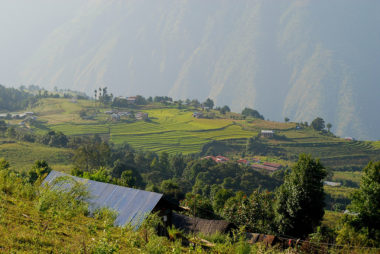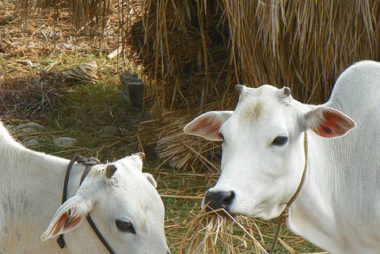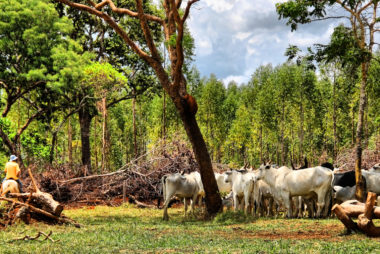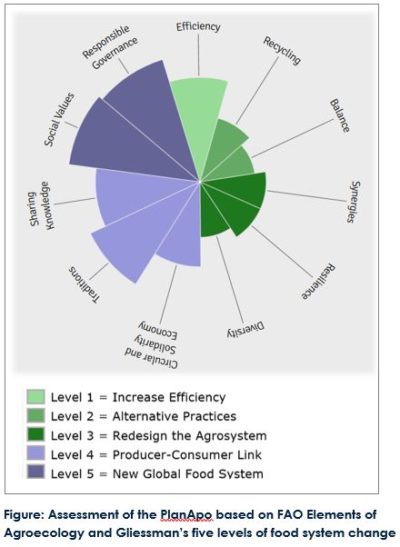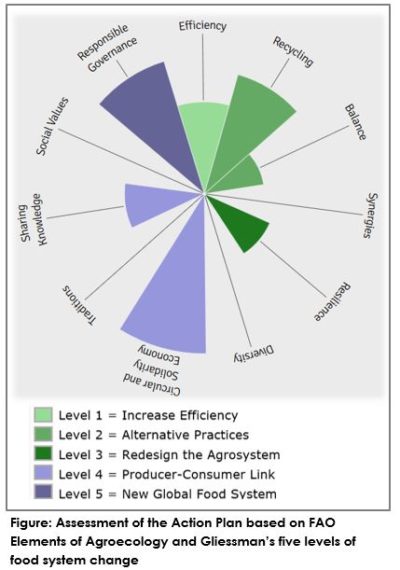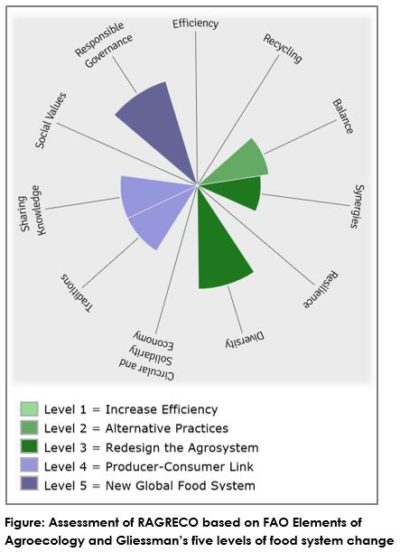QUITO: PARTICIPATORY URBAN AGRICULTURE PROJECT
Category:
![]()
Implementing Organisation:
Municipality of Quito
Period:
2002 – now
In a nutshell
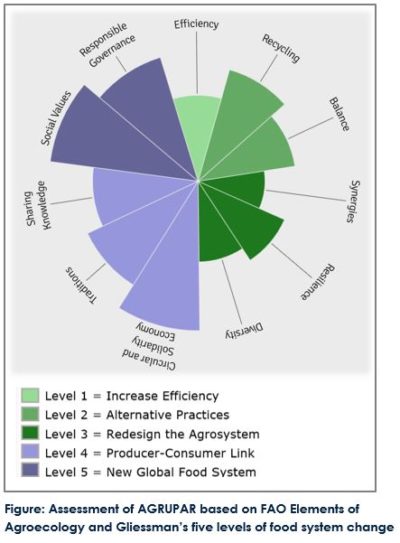
The Participatory Urban Agriculture Project (AGRUPAR) was initiated in 2002 within the Municipality of Quito.
The project targets the most vulnerable people of the city through supporting self-production of organic food and by promoting urban agriculture as a livelihood and a powerful strategy for food security and nutrition.
With the overall goal to generate employment and improve family incomes, AGRUPAR promotes self-production and the selling of surplus through alternative local marketing projects called “bioferias”. The bioferias are spaces where consumption of healthy and nutritious food is promoted as a civil right. Seventeen bioferias have opened throughout the city, mainly located next to health stations, where citizens can benefit from obtaining a free health assessment and information for a healthy diet.
In recent years, the AGRUPAR has transcended beyond the urban level of intervention to rural areas of Quito. With this new evolvement, the urban and rural areas are more interconnected and united which makes the development process — built on agroecological bases — more sustainable and resilient.
Addressing the pressing need to combat climate change, Quito integrates climate change adaptation criteria to urban agriculture, providing a valuable carbon compensation measure for the business sector.
Context
AGRUPAR is operational in all eight administrative zones of the Metropolitan District of Quito. It brings together around 12’250 urban and peri-urban farmers and 380 community-based organizations, supported by local and national government departments, universities, development cooperation agencies and NGOs, and the private sector. At last count, the project had helped establish 1’072 active gardens – including 140 community gardens, more than 800 family gardens, and 128 gardens in schools and other institutions – as well as 314 livestock production units. Annual food crop production is estimated at 400 tonnes.
Objective
The Metropolitan District of Quito has an explicit policy objective to improve the livelihood conditions of both its urban and rural inhabitants. The objective of AGRUPAR is to improve food security — defined as the secure access to safe food — among the poor in the city core and its outskirts, through organic farming and gardening and small animal husbandry. It also addresses the importance of environmental and waste management.
Key Interventions
Municipality Level:
The project supports the entire food value chain from growing crops, to processing and selling produce.
- Citizens receive extensive training by technical advisors on organic farming methods and techniques. Support services include: constructing greenhouses, installing drip irrigation, providing microcredit options, assisting with organic certification, and helping farmers gain access to food processing services and markets.
- The selling is enhanced by carrying out alternative local marketing projects called “bioferias”. The bioferias are spaces where consumption of healthy food is promoted as a civil right. Overall democratization of the food system is promoted within the framework of responsible consumption and fair local trade.
- The project is extremely inclusionary and works to engage a variety of people and institutions, including women, the elderly, migrant families, schools, hospitals, women’s shelters, orphanages, and drug and alcohol rehabilitation centers.
Lessons Learned/challenges
The AGRUPAR project works on various dimensions of urban agriculture production, recreation, occupational therapy, education, health, and culture, with a wider transformative impact on the communities and the people. In particular, AGRUPAR has strengthened social relationships between producers and consumers, generating solidarity networks, and the inclusion of small farmers into the food system. Moreover, the adoption of a systemic and integrated vision allowed the project to attend the needs of diverse target groups and succeed in involving the most vulnerable groups.
Relevant Links & references
- Milan Urban Food Policy Pact: “Quito: Participatory Urban Agriculture Project (AGRUPAR)”
- Youtube: “FPA 2018 Silver Award Winner Quito, Ecuador”
- FAO: “Urban and Peri-urban Agriculture in Latin America and the Caribbean: Quito”


